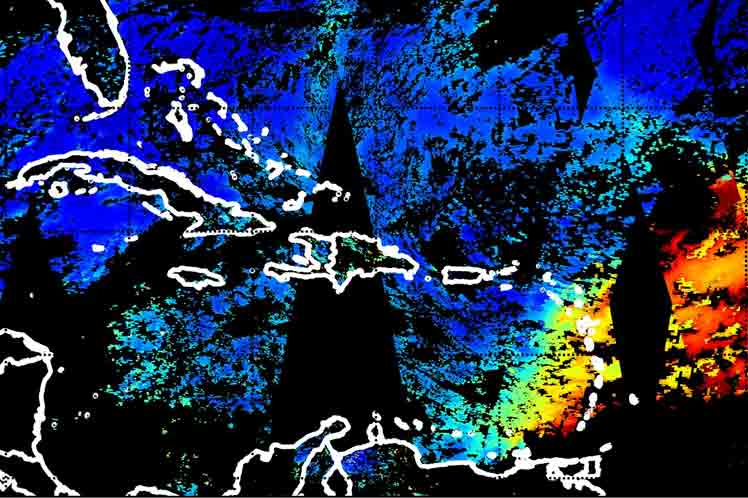According to official information from that institution on its Facebook page, starting at 12:00 local time, this event will affect Camagüey after having crossed the Lesser Antilles and moving west.
The analysis of various forecast models suggests that the highest concentrations of this atmospheric aerosol will be recorded this Wednesday and Thursday, decreasing by Friday.
International models show a high concentration of these particles on the surfaces of the area, which could affect the air quality, for which a high degree of caution is recommended to citizens.
Last June, almost the eastern half of the Cuban archipelago remained for several days under a cloud of Dust from the Sahara.
This phenomenon makes the atmosphere rarefied and causes suffocating heat, raising the thermal sensation to 38 and 40 degrees Celsius.
It also causes the incidence of a high pressure system, and the rains will be limited throughout the country. The Doctor in Physical Sciences, Eugenio Mojena, advisor to the Forecast Center of the Institute of Meteorology of this nation reported that these clouds are generated by sand and dust storms from the deserts of the Sahara and the Sahel, in Africa, with atmosphere heights of 3 to 7 kms.
“Once they emerge from the African continent, they move westward under the flow of the trade winds, spreading through the Atlantic Ocean until they reach the Caribbean Sea, Cuba, the southeastern United States, Mexico and Central America,” the expert recently told newspaper Granma.
He explained the dust is loaded with particulate material PM 10 and PM 2.5 that are highly harmful to human health, and also contain minerals such as iron, calcium, phosphorus, silicon and mercury.
In addition, they accumulate viruses, bacteria, fungi, pathogenic mites, staphylococci and persistent organic pollutants.
Usually, the dust clouds begin to arrive in our country between March and April, but the largest waves occur in June, July and the first half of August, Mojena said.
He specified that, as these clouds originate a mass of very hot and dry air with low humidity values, they hinder the emergence and development of tropical cyclones by creating a hostile environment for them, increasing the wind shear in the height, which prevents the system from concentrating energy.
Regarding its effects on human health, he stated this dust encourages allergic conditions, asthma, skin problems and other diseases.
However, they have a beneficial side, because, within the minerals that they transport, there is phosphorus that helps fertilize the earth, indicated the specialist.
ef/rgh/cdg









